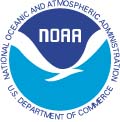|
Updated
12/4/2002
Archived
Color satellite images and animations of hurricanes and tropical
storms are available.
Get
the latest information on the hurricanes from the National
Weather Service Forecast Office, Tallahassee, Fla.
P-3 Research Flights Flagships of the NOAA aircraft fleet, the P-3's are among the most advanced airborne environmental research platforms flying today. They operate around the world, participating in NOAA, interagency, and international investigations. These aircraft give scientists a unique asset for the study of hurricanes and other severe storms, global climate change, air chemistry and pollution, oceanography, arctic ice formation, and many other environmental issues. The P-3 Hurricane Hunters are operated by the Hurricane Research Division. The decision to allow media to fly on the P-3 flights for a particular storm is made by the HRD, usually at the last minute. The NOAA P-3 only flies 200 hours per season and the number of media who can fly are subject to the science that HRD is conducting and the number of scientists conducting it. The number of media that can be accommodated on the P-3 depends on the seats available (probably not more than two seats). More info
on the Lockheed
P-3 aircraft is available. U.S. Air Force Reserve Hurricane Hunters The
53rd Weather Reconnaissance Squadron, known as the Hurricane Hunters
of the Air Force Reserve, flies into tropical storms and hurricanes
on a routine basis. The Squadron operates 10 Lockheed WC-130 aircraft
and crews are based at Keesler Air Force Base in Biloxi, Mississippi. Lots of
information on the Hurricane Hunters is available
on the Internet. NOAA Aircraft Operations Center NOAA's Aircraft Operations Center (AOC) is located at McDill Air Force Base in Tampa, Fla. The AOC provides the aircraft equipped with the scientific instruments required for a hurricane research mission. Contact: Lori Sumner, (813) 828-3310 ext. 3001 or 3072 or Dr. Jim McFadden, (813) 828-3310 X 3076 Gulfstream-IV The Gulfstream
G-IV, first flown in 1997, flies into the steering currents of hurricanes
at 45,000 feet. Data from dropwindsondes that measure barometric pressure,
temperature, and wind flow will be transmitted to a satellite, which
will then transmit it to the National Hurricane Center in Miami and
the National Environmental Satellite, Data, & Information Center
(NESDIS) in Suitland, Md.
Media flights on the Gulfstream-IV are coordinated through the National Hurricane Center. Requests are handled first come/first served and generally no more than two members of the media can fly on any particular mission. More details
on the G-IV
and a backgrounder
is also available. National Weather Service Regional
Forecast Offices - Eastern Seaboard
NWS Regional Forecast Offices - Gulf Coast
NOAA Weather
Radio
Frequently Asked Questions About Hurricanes Check here for some frequently asked questions about tropical storms and hurricanes.
Hurricane
Backgrounders in PDF & Text Hurricane
Tracking Models: Helping to Forecast Severe Storms The
Retirement of Hurricane Names Hurricane
Hugo -- An Eyewitness Account
HURRICANES: Nature's Greatest Storms ||STORY IDEAS for REPORTERS || NOAA PUBLIC AFFAIRS || MEDIA RESOURCES 2002 PRESS RELEASES || NOAA HOME PAGE || BACKGROUNDERS |

